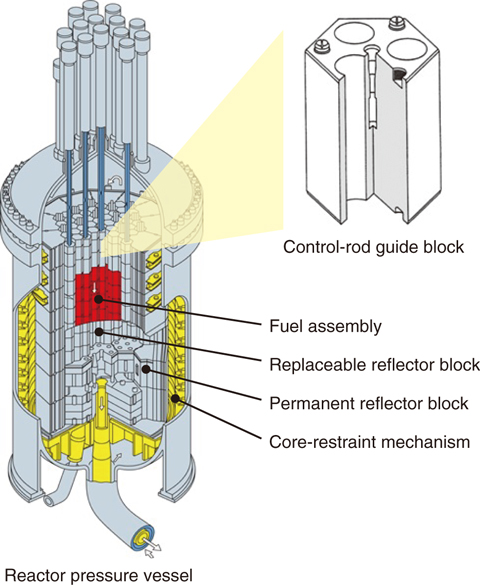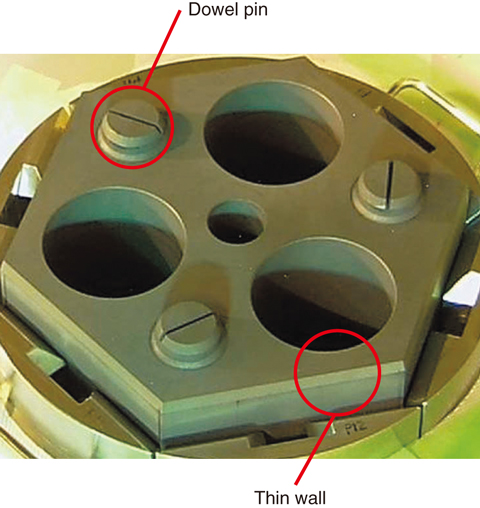
Fig.6-11 Reactor pressure vessel and control-rod guide block of the High-Temperature Engineering Test Reactor (HTTR)

Fig.6-12 Visual inspection of the control-rod guide block
After the Great East Japan Earthquake (3.11 earthquake) on March 11, 2011, the seismic integrity of nuclear reactors became a primary concern. A visual inspection of reactor buildings, equipment, and instrumentation was conducted to confirm the seismic integrity of the High-Temperature Engineering Test Reactor (HTTR). However, it is very difficult to inspect components installed inside the reactor pressure vessel. Reactor components, which comprise graphite blocks, are circumferentially restrained by a core-restraint mechanism (Fig.6-11). However, because there are small gaps between the graphite components, these are considered likely to be damaged by collisions in seismic events on the scale of the 3.11 earthquake. Therefore, it is necessary to confirm the integrity of the graphite components by seismic analysis. Seismic acceleration imposed upon the graphite components should be calculated because seismic-observation systems cannot be installed inside the reactor pressure vessel. The seismic acceleration for the analysis was estimated from the relationship between the seismic acceleration observed inside and outside of the reactor building and from the frequency-transfer function of the foundation that supports the reactor building. The seismic-evaluation method for graphite components proceeded by calculations from outer to the inner components in the order of the reactor building, the reactor pressure vessel, and the graphite components, so as to evaluate the inner components using the seismic acceleration obtained by the evaluation of the outer components. For this seismic evaluation, the analytical model was validated through experiments using actual scaled-down equipment and its analysis. As a result of the evaluation, the seismic integrity of all graphite components was confirmed.
Neutron-startup sources were exchanged in HTTR in October 2015. The control-rod guide blocks, wherein the neutron startup sources were installed, were taken out from the reactor core and visually inspected subsequently, as shown in Fig.6-12. The reactor components were taken out for the first time since the 3.11 earthquake, providing a good opportunity to confirm the seismic integrity directly. As a result of the visual inspection, it was confirmed that there was no damage to the whole block surface, including the thin wall and the dowel pins where seismic force was concentrated upon the control-rod guide block.
For further investigation toward the restart of the HTTR, the seismic integrity of the graphite components as well as the other equipment and instrumentation will be confirmed by evaluation using a design-basis ground motion that will be established based on new knowledge by a safety review by the Nuclear Regulation Authority.
<Previous: 6-5 | Next: 7 Research and Development of Fast Reactors>